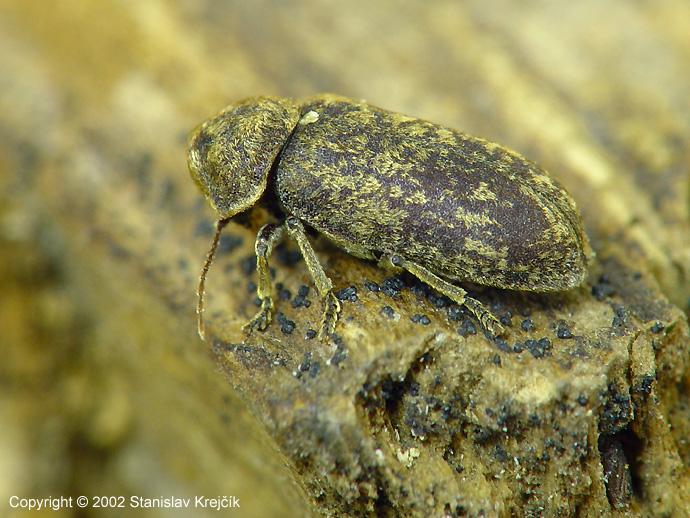
Interactions
Beetles have significant interactions with a variety of other
organisms. Although they mostly serve as prey to larger
insects and even other species of beetles, there most noted
interactions occur with humans. Both beetles and humans
cause negative interactions between one another. Although
they are n ot endangered, humans destruction of important natural resources
such as rotted and old trees for construction takes away much of
the Xestobium rufovillosum's natural habitat. On
the other hand, in Western Europe many homes and buildings that
use old wood, specifically oak, have been greatly damaged by the
feeding of the beetle larvae and the exit holes of adults (Akbulut
et. al., 2008).
Insecticides have proven not to be effective, yet
researchers agree natural predators such as the steely blue
beetle (Korynetes caeruleus) and a variety of predatory
spiders are able to consume large numbers of beetle larvae and
eggs (Akbulut et. al., 2008).
The presence of the steely blue beetle usually indicates the
infestation of the death watch beetle. The microorganisms
that allow the beetles to digest the cellulose in wood also
allows them to stay close to their food source and avoid
predators (Akbulut et. al., 2008).
ot endangered, humans destruction of important natural resources
such as rotted and old trees for construction takes away much of
the Xestobium rufovillosum's natural habitat. On
the other hand, in Western Europe many homes and buildings that
use old wood, specifically oak, have been greatly damaged by the
feeding of the beetle larvae and the exit holes of adults (Akbulut
et. al., 2008).
Insecticides have proven not to be effective, yet
researchers agree natural predators such as the steely blue
beetle (Korynetes caeruleus) and a variety of predatory
spiders are able to consume large numbers of beetle larvae and
eggs (Akbulut et. al., 2008).
The presence of the steely blue beetle usually indicates the
infestation of the death watch beetle. The microorganisms
that allow the beetles to digest the cellulose in wood also
allows them to stay close to their food source and avoid
predators (Akbulut et. al., 2008).